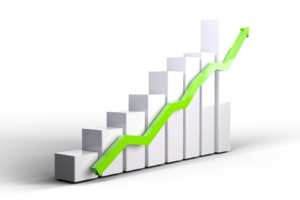If you have just started investing in Stock Market or planning to start investing after reading stock market books, watching videos on YouTube or reading articles on different websites, you must have heard about “Stock Portfolio”.
The quality of your Stock Portfolio determines the performance of your investment. But, before we start explaining how to build a better stock portfolio, it is important to answer “What is Stock Portfolio?”
Stock Portfolio is collection of stocks of different companies you have purchased after keeping few factors in your mind such as amount invested in each stock, selection from different industry to diversify total investment, time period of investment, your risk appetite etc.
In simple terms, Suppose Mr. Ram wants to invest Rs.10,000 in Stock Market. Out of this Rs.10,000 he has bought 100 shares of ABC Ltd at Rs.20 each, 150 Shares of XYZ Ltd at Rs.30 each and 100 shares of PQR Ltd at Rs.35 each.
ABC Ltd is from Auto Industry, XYZ Ltd is from Banking Industry and PQR Ltd is from Pharma industry.
In this manner Mr. Ram has diversified his portfolio with total investment of Rs.10,000 and having shares of 3 different companies of different industry. This is his Stock Portfolio of Rs.10,000
Now, you may have few questions in your mind about Mr. Ram Portfolio
Why he has not invested all Rs.10000 in ABC Ltd ?
Why only 3 why not 5 or 10 or 20 or more company?
What is the benefit of investing in stocks from different industry ?
Are ABC Ltd, XYZ LTd and PQR Ltd safe stocks or risky stocks
What is the overall quality of Mr. Ram Portfolio?
Would he be able to get good returns on his investment?
We will try to answer all these questions in this article.
There is a famous saying “Don’t put all your eggs in one basket”. That applies to stock market too.
“Never invest all your hard earn money in one Stock” as it increases the risk of losing your invested money if that only one stock or sector fails to perform. whereas, if you have diversified portfolio with different quality stocks from different industry then that portfolio will minimize the risk exposure to particular company or particular sector and most likely perform well.
Before we answer how to build a stock portfolio, let’s answer some key questions
How Long you want to remain invested
Before selection of stocks make your mind for how long you want to remain invested. Whether you want to invest for short term or for long term. In stock market if you want to create wealth you should always have long term view.
How much risk you can take
Selection of stocks also depends upon your risk taking ability. If you can take risk and invest for long term, then you can invest in some risky stocks. But for a person who does not want to take risk and even want to invest for a small time period, safe stocks would be first preference.
How much you want to invest
First thing first, ask yourself what amount you want to invest. A portfolio depends upon your total capital you want to invest, so make yourself clear how much money you want to invest. If you are a new investor or beginner it is always advisable to start with small amount.
Initially, you can start with a lumpsum amount and make your portfolio, later you can invest in SIP mode (monthly basis) or as and when there is correction in stocks you have in your portfolio then you can buy more.
It is advisable that all stocks you have shortlisted out of your full watchlist are quality stocks which you have selected after your self research (Not on the basis of tips from any friend or relative)
It is further recommended to keep a track on individual stock in your portfolio.
If needed, do some changes in your portfolio time to time but do not make changes more frequent.
Why should you diversify in different industry?
Never invest in stocks of only one sector or industry, this will increase the risk on your investment, diversification in different industry divides your risk. If one sector in any economy is not performing and other is performing even better then negative returns from one sector would get settled from positive returns from other sector and your overall portfolio would outperform in average conditions.
Now let’s go into more details of picking up of stocks and building a portfolio
First of all shortlist all the quality stocks from different industry such as IT, Pharma, Banking, Automobiles, FMCG, Metal & Mining etc.
If you have any difficulty in selection of stock, you can go through our article How to pick Multibagger stocks for your reference.
Now categorize all your shortlisted stocks in below mentioned categories.
Fast Growing Stocks
Fast Growing stocks or growth stocks are stocks of those companies which are on fast track in terms of earning and growth if compared with rest of the market based on past performance.
Most of them are young company and have a promising future ahead.
Growth Stocks generally give handsome return but are highly risky stocks as sudden change in policies, global factors or competition can adversely affect the growth if not managed in proper timely manner due to lack of experience.
Fast Growing stocks have greater possibility to become a Multibagger stock.
Income Stocks
These are stocks of those company which keep on rewarding its shareholders in term of dividend.
They are good dividend paying stocks with history of regular dividend payments. They fluctuate less as compared to other stocks.
Defensive Stocks
Defensive Stocks are stocks of big companies which have solid brand and we know them very well.
We generally use their product or services. They are safe bet in long term as they don’t fluctuate much with volatility in market.
For Example Famous Companies in FMCG Sector like Nestle, HUL, Marico, etc. They work on consumption story and no matter what happens to economy but sales of their product and services continues.
Safe Stocks
These are stocks of well established companies. They have long history of outstanding performance but now they are much stable. Safe Stocks are less risky but don’t except Multibagger return from them.
They grow slower than growth stocks and give dividend less than income stocks. Most of the stocks in Sensex and Nifty index are good example of Safe Stocks.
Cyclical Stocks
Cyclical Stocks move with the condition in the economy, means with the uptrend and downtrend in the economy. Infra, metal and auto stocks are best fit in this category. It’s better to enter in downtrend and exit when they are in strong uptrend.
So, these are some categories in which you can divide your shortlisted stocks. Now, let’s check the important part of any portfolio.
How much to invest in each category
Now when you have categorized all your shortlisted stocks as per above category, it is important to know what percentage of your total portfolio should be given to each category.
If you are looking for a balanced portfolio with moderate risk and having long term view, then your portfolio should look like as under
50% (Safe Stocks) + 20% (Fast Growing) + 15% (Income Stock) + 10% (Cyclical Stocks) + 5% (Defensive Stocks)
We have given weightage based on our personal experience and research.
It’s all depends upon how much risk you want to take but remember one thing you should always give maximum weightage to Safe Stocks as they are having stability and history of strong performance along with that they combine some attributes of fast growing stocks and some of Income stocks.
Now the question comes in your mind “How many stocks should be there in an ideal portfolio”
There is no specific answer to this but generally it should be more than 3 and less than 30 stocks.
Some prefer 3 to 8 stocks in their portfolio. Some experts suggest 12 to 15 Stocks and some to diversify more, prefer 20 to 25 stocks in their portfolio.
It also depends upon how much time you can devote in monitoring performance of stocks in a portfolio. But, as we said earlier, frequent change is portfolio is not advisable.
So, now you have a better idea about how to make a quality portfolio.
We have also discussed about what are the factors you should keep in mind while building a portfolio.
If you still have any question in your mind please comment below or write to us @ investaru30@gmail.com
Disclaimer: Views mentioned in this article are based upon personal experience of author. Stocks referred in this article are just for education purpose only. It should not be considered as Buy or Sell Recommendation. Please consult your financial advisor before investing in stock market.




